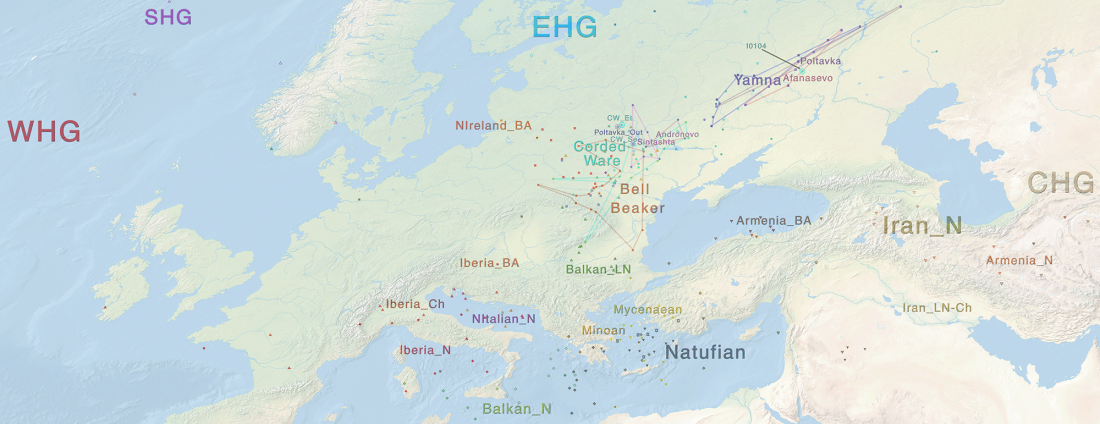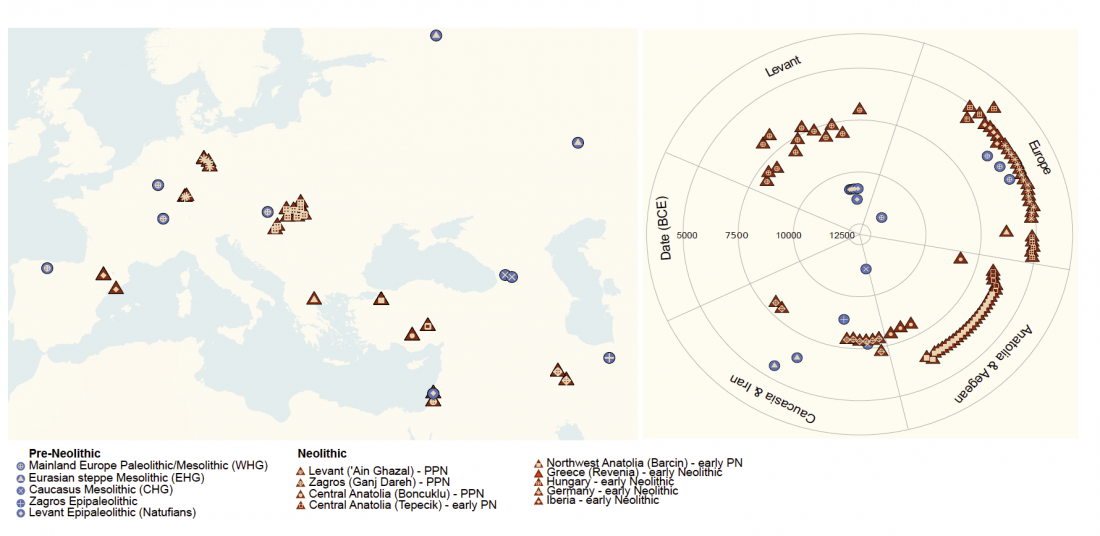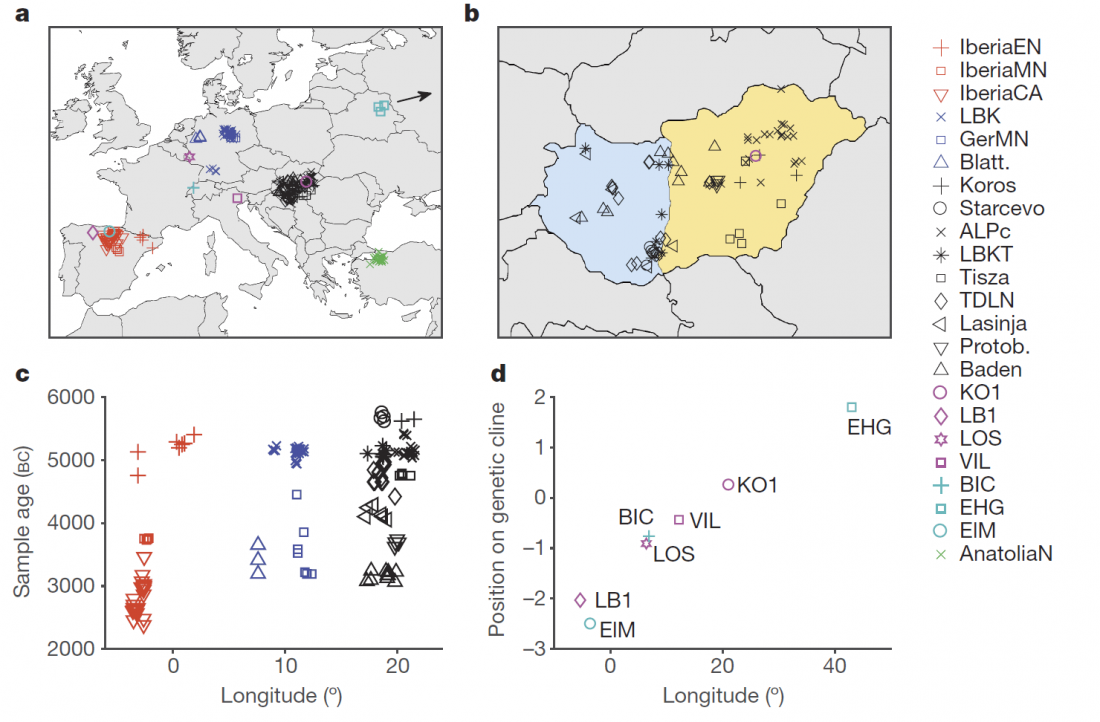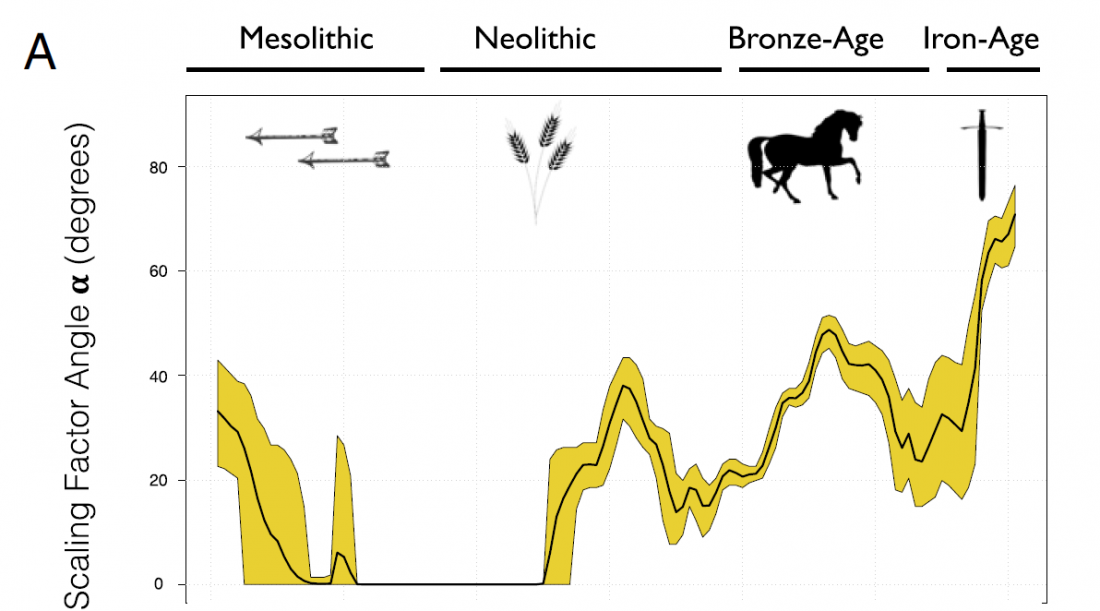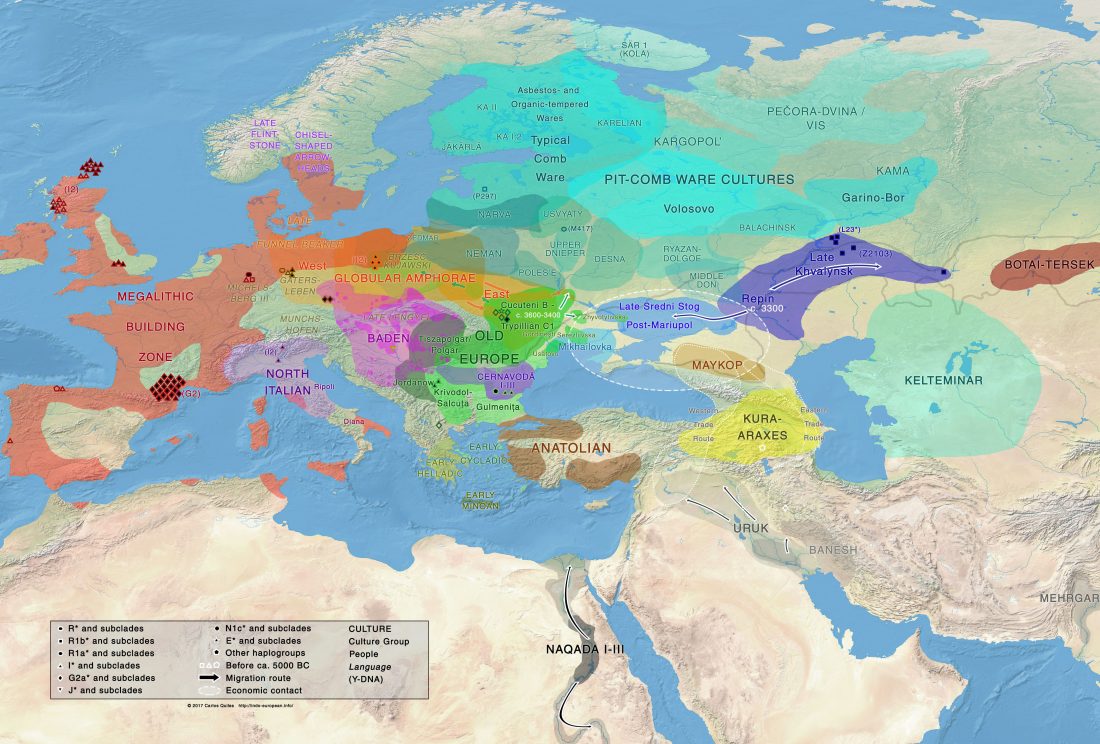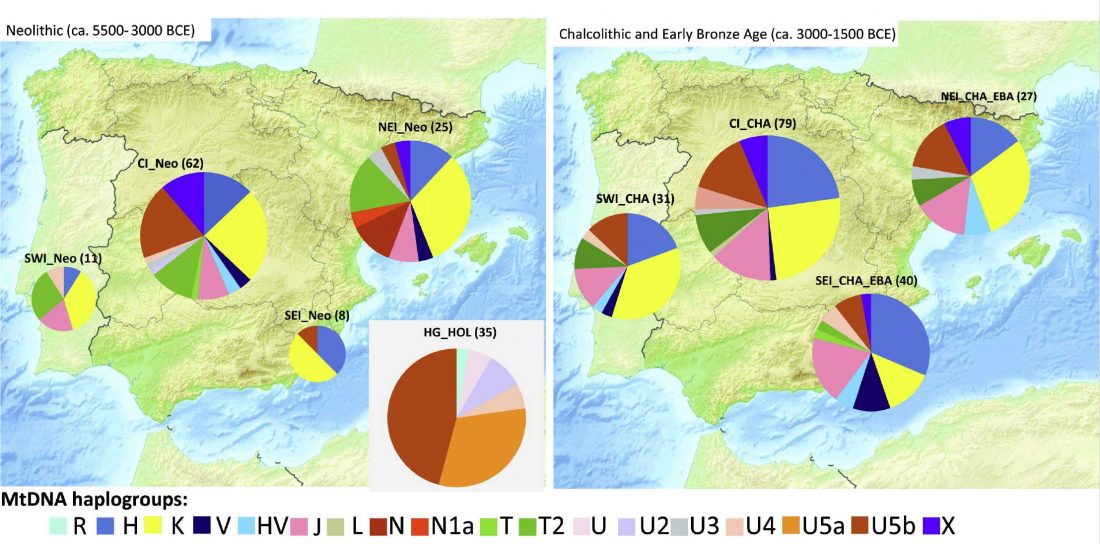I already wrote about the concept of outlier in Human Ancestry, so I am not going to repeat myself. This is just an update of “outliers” in recent studies, and their potential origins (here I will repeat some of the examples):
Early Khvalynsk: the three samples from the Samara region have quite different positions in PCA, from nearest to EHG (of Y-DNA haplogroup R1a) to nearest to ANE ancestry (of Y-DNA haplogroup Q). This could represent the initial consequences of the second wave of ANE ancestry – as found later in Yamna samples from a neighbouring region -, … Read the rest “The concept of “Outlier” in Human Ancestry (II): Early Khvalynsk, Sredni Stog, West Yamna, Iron Age Bulgaria, Potapovka, Andronovo…”
